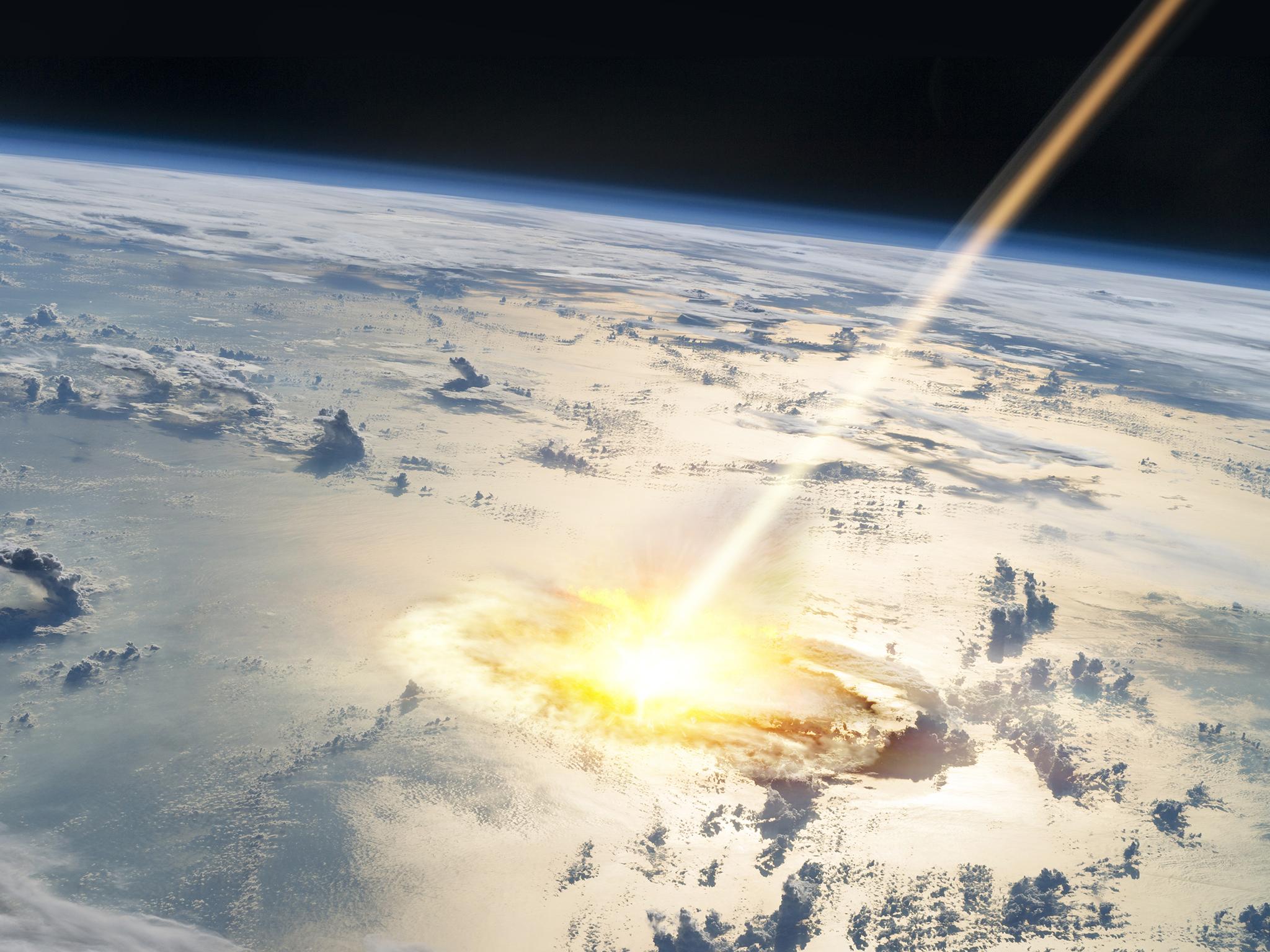Asteroid that wiped out dinosaurs caused mass extinction by acidifying ocean, scientists find
New research suggests that impact had devastating results for marine life

Your support helps us to tell the story
From reproductive rights to climate change to Big Tech, The Independent is on the ground when the story is developing. Whether it's investigating the financials of Elon Musk's pro-Trump PAC or producing our latest documentary, 'The A Word', which shines a light on the American women fighting for reproductive rights, we know how important it is to parse out the facts from the messaging.
At such a critical moment in US history, we need reporters on the ground. Your donation allows us to keep sending journalists to speak to both sides of the story.
The Independent is trusted by Americans across the entire political spectrum. And unlike many other quality news outlets, we choose not to lock Americans out of our reporting and analysis with paywalls. We believe quality journalism should be available to everyone, paid for by those who can afford it.
Your support makes all the difference.What happened to the dinosaurs when an asteroid about six miles wide struck Earth some 66 million years ago in what is today Mexico is well known: it wiped them out. But the exact fate of our planet’s diverse ocean dwellers at the time — shelly ammonites, giant mosasaurs and other sea creatures — has not been as well understood.
New research now makes the case that the same incident that helped bring an end to the reign of the dinosaurs also acidified the planet’s oceans, disrupted the food chain that sustained life underwater and resulted in a mass extinction. The study, published Monday in Proceedings of the National Academy of Sciences, aims to shore up the hypothesis that the Chicxulub event’s destruction of marine life — the result of sulphur-rich rocks depositing acid rain into the oceans — was just as severe as the fire and fury it brought to land.
“It’s flash acidification, and it transformed ecosystems for millions of years,” said Noah Planavsky, a biogeochemist at Yale and one of the study’s authors. “We were shocked that we actually found this.”
The impact of the Chicxulub asteroid — so named for the crater it carved out around the Gulf of Mexico — sent columns of rock into Earth’s atmosphere, incinerated the planet’s forests and drove tsunamis far across the oceans. But the connection between the crash and the marine extinction has been less solid.
That gap in understanding was on the mind of Michael Henehan, a geochemist, when he attended a conference in 2016 in the Netherlands that included a group outing to the cave system at Geulhemmerberg, which contains stones from the end of the Cretaceous period. There, he came upon a surprisingly thick rock layer made of grey clay that formed just after the asteroid hit. Lacking proper rock sample bags, he emptied the contents of his lunch into his pockets, collected some rocks and put them into his lunch bags.
Back in the lab at Yale University, Mr Henehan, who is now a researcher at GFZ Helmholtz Centre in Potsdam, Germany, cleaned the rocks and found the fossil shells of thousands of tiny marine plankton called foraminifera, or “forams.” Finding so many shells was fortunate, he explained, because they preserve trace amounts of boron, a chemical element that is sparse in such fossils, but offers clues to the ancient acid levels of the oceans when enough of it can be found.
Mr Henehan and his team measured the boron, and found that the relative proportions of two isotopes of the element changed abruptly right at the time of the impact. In shells like these, Mr Planavsky explained, proportions of the boron isotopes shift when the acidity of the oceans rises. And because this ancient shift happened in the first 100 to 1,000 years after the impact, it means the oceans became acidic practically overnight.
The flash acidification would have devastated organisms that formed the foundations of ecosystems, leading to problems for other creatures like the ammonites that lived higher up the food chain.
“This is a big leap forward,” said Chris Lowery, a paleoceanographer at the University of Texas at Austin who was not involved in the new work.
The study offers evidence of what sustained the marine extinction after the asteroid impact got things rolling. That, and it confirms that the asteroid triggered the extinction in the first place.
Around the time that the asteroid struck, there was intense volcanic activity in what is today India, causing over 200,000 cubic miles of lava to be disgorged over about 1 million years. For a long time, it was not clear if the marine mass extinction stemmed from changes wrought by the volcanism or by the asteroid. But because the boron shift happened exactly at the boundary, it is now obvious that the asteroid had the bigger effect.
“It’s very, very strong evidence that the ocean acidification was caused by the impact and not volcanoes,” Mr Lowery said.
The flash acidification and mass extinction, though ancient events, are relevant to our modern world. According to reports from the United Nations Intergovernmental Panel on Climate Change, human emissions of carbon dioxide are not only warming the planet, but also acidifying the oceans. And that modern acidification, Mr Planavsky says, is happening at a rate and scale comparable to the asteroid-triggered acidification. A similar result, he said, “is on the extreme end of what we could get in the next 100 years.”
The New York Times
Join our commenting forum
Join thought-provoking conversations, follow other Independent readers and see their replies
Comments